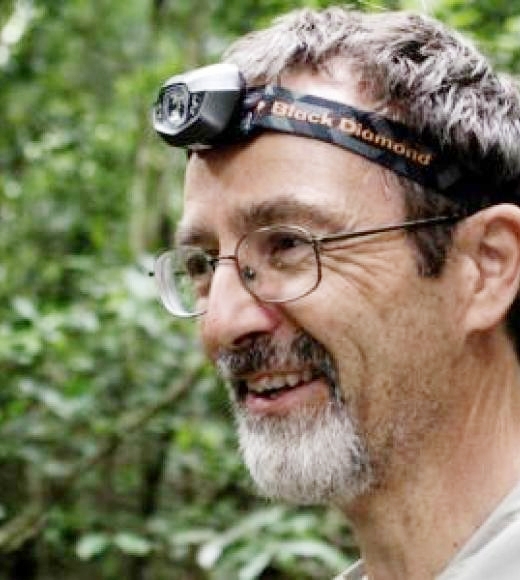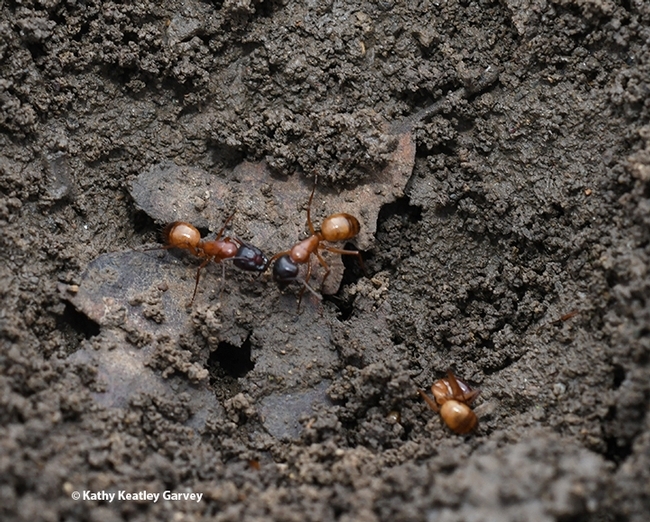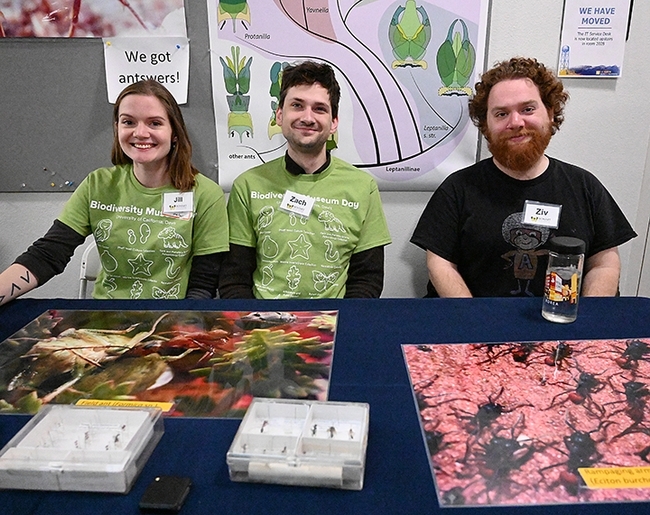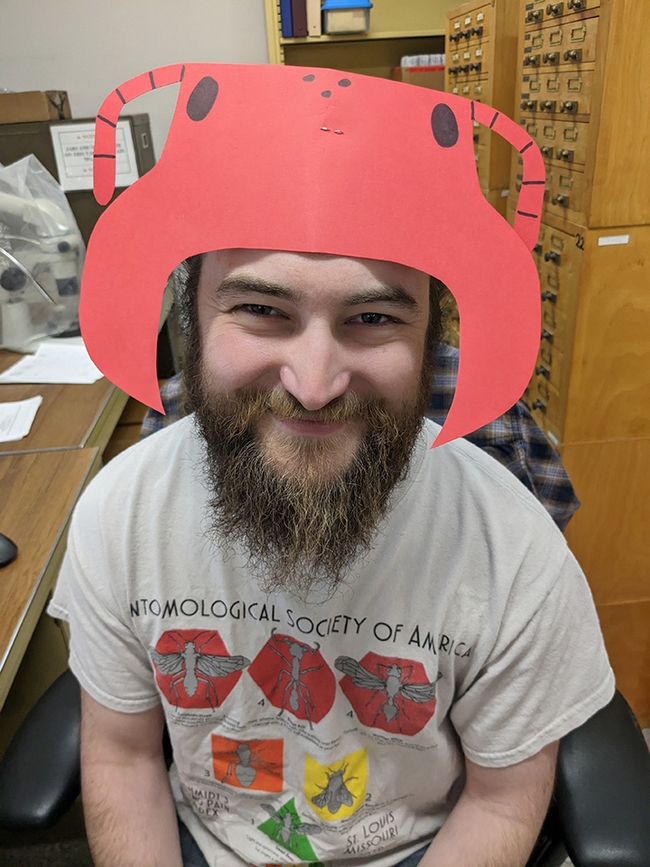
Right.
They belong to the same order, Hymenoptera, but some folks insist that ants don't belong in your life.
Oh, but they do!
Find out why at the Bohart Museum of Entomology open house from 1 to 4 p.m., Sunday, May 21. The event, spotlighting ants, is free and family friendly. It will take place in Room 1124 of the Academic Surge Building, 455 Crocker Lane.
Members of the Phil Ward lab, UC Davis Department of Entomology and Nematology, will answer your questions, show live ants and specimens, and engage in one-on-one discussions.
In a video released by the Bohart Museum of Entomology during a campuswide Biodiversity Museum Day, Professor Ward related: "Ants have occupied almost all of the world's land surfaces, from deserts to rain forests. There's a few places they're absent. They're not in Antarctica, no surprise! They haven't colonized the Arctic and a few very high elevation tropical mountains, but apart from that, almost any place you go on land you'll see our friends, the ants. And they have assumed a quite a diverse array of ecological roles. Some of them are predators, others are scavengers, and some are seed collectors, and these habits vary tremendously among different species in different parts of the world."
Among the Ward lab personnel scheduled to participate are doctoral candidates Jill Oberski and Zach Griebenow (both are expected to receive their PhDs this year), and third-year doctoral student Ziv Lieberman. Griebenow and Oberski are veterans of UC Davis teams that won national championships in the Entomological Society of America's Entomology Games or "Bug Bowls." (See news story) UC Davis teams won national championships in 2022, 2018, 2016 and 2015.
Meanwhile, be sure to watch what Professor Ward says in the video posted on YouTube at https://youtu.be/d8eRNsD8dxo. He illustrated his talk with ant images taken by his former doctoral student Alex Wild (PhD from UC Davis in 2005), curator of entomology at the University of Texas, Austin, and a noted macro photographer, (http://www.alexanderwild.com).
How ancient are ants? Ants originated about 120 million years ago (early Cretaceous), evolving from "wasp-like creatures," Ward said. They are members of the order Hymenoptera, and their closest relatives include honey bees, cockroach wasp and the mud daubers.
How many species in California? California is home to some 300 species of ants, but thousands more live in the tropics. Globally, there may be as many as 40,000 to 50,000 species of ants, the professor estimated, but only about 14,000 are described.
How do they communicate? Ants communicate largely by chemical (pheromones) and tactile means, Ward said. Their vision is "not particularly acute." He pointed out that that they lay a trail pheromones from the source of food back to the nest. They have alarm pheromones, causing other workers to act defensively. Chemicals also help ants distinguish their nest mates.
What about those Argentine ants? Some ants, like the Argentine ants, are pests. These invaders from South America "form super colonies, which means different colonies don't fight each other; they're all cooperating. And the other downside of Argentine ants is that they tend to eliminate native ants. So over the years I've lived in Davis, I have certainly noticed that native ants have declined as the Argentine ants have expanded. And they expand not just in, say, urban areas, but along certain natural habitats and one that they really like is the riparian habitat. So if you look along rivers and streams that are near urban areas, they're getting invaded by Argentine ants. And when they do, most native ants just disappear. This is a very tough aggressive ant and the mellow California ants can't handle an aggressive invader from South America. So they just disappear."
Ward related that ants live in long-lived colonies with (1) cooperative brood care (2) overlapping generations and (3) reproductive division of labor, the hallmarks of eusocial behavior. He also pointed out:
- A typical ant colony contains a reproductive queen, numerous non-reproductive workers and brood (eggs, larvae, pupae)
- Colonies of ants can be thought of as superorganisms: tightly integrated and cooperative entities with complex systems of communication and division of labor (castes)
The Bohart Museum's arts-and-crafts activity will be to create paper ant headbands. "The current version has serrated mandibles, but people can go free form, too," said Tabatha Yang, education and outreach coordinator. "We're hoping for a colony of visitors with red headbands."
The Bohart Museum, directed by UC Davis distinguished professor Lynn Kimsey, houses a global collection of eight million insect specimens, plus a petting zoo (including Madagascar hissing cockroaches, stick insects and tarantulas) and a gift shop, stocked with insect-themed t-shirts, hoodies, jewelry, posters, books, and collecting equipment.
Founded in 1946, the Bohart is open to the public Mondays through Thursdays, from 8 a.m. to noon, and 1 to 5 p.m. More information is available on the Bohart website at https://bohart.ucdavis.edu or by emailing bmuseum@ucdavis.edu.
Attached Images:

These are carpenter ants, Camponotus semitestaceus, as identified by UC Davis 2020 alumnus and ant researcher Brendon Boudinot, an Alexander von Humboldt Research Fellow at the Institute of Zoology and Evolutionary Research at Friedrich Schiller University Jena. (Photo taken in Vacaville, Calif. by Kathy Keatley Garvey)

Phil Ward lab members are ready to answer your questions about ants. From left are Jill Oberski and Zach Griebenow, both doctoral candidates, and third-year doctoral student Ziv Lieberman. (Photo by Kathy Keatley Garvey)
